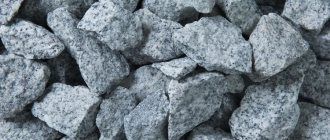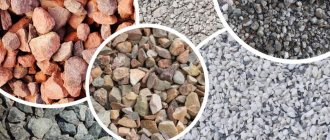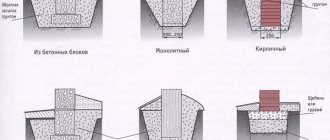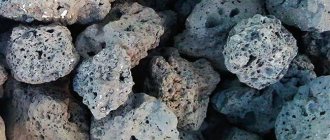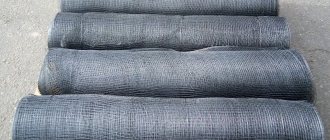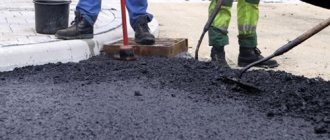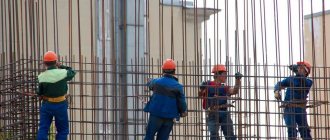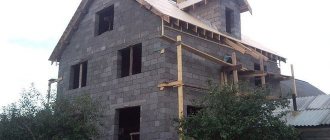Types of crushed stone
The production of inorganic concrete aggregate includes 2 stages of processing: crushing, sorting of rocks, solid construction waste, metallurgy.
Building materials are classified according to the origin of raw materials, fractional composition, and other features. The main types of construction crushed stone are as follows.
Granite
The rock is separated from the rock mass by an explosion and transported to the crushing and screening complex - DSK. Requirements for stone processing products are established by the GOST 8267-93 standard - construction crushed stone and gravel from dense rocks. Characteristics:
- fractions – from 5-10 to 70-12 mm;
- strength grade – 800-1600;
- frost resistance – 300-400.
The color of granite breccia depends on the color of the grains of its constituent minerals: feldspar (pink), quartz (white), mica (from transparent to black).
Shades change from gray to pinkish.
Gravel
What has been said about crushed granite applies equally to this type of concrete aggregate, excluding strength grades - it does not exceed M1200.
The difference lies in the method of obtaining raw materials for production: gravel - rounded individual rocks destroyed by nature. Small pebbles are sifted without crushing, and boulders are passed through a crusher. The rounded edges of the stone make the concrete based on it less durable.
Limestone
It is made from carbonate rocks, which explains the restriction on use in critical structures made of concrete. You can identify crushed stone by the following indicators:
- color – from white to light gray;
- dusting during loading and unloading;
- maximum size – 40-70 mm.
A variety is dolomite aggregate. The main advantage is an affordable price with good strength and frost resistance.
Secondary
Produced in accordance with GOST 25137-82 for dense sand and crushed stone from industrial waste. For production, fragments of destroyed concrete and brick structures are used. Peculiarities:
- strength – up to M800;
- resistance to freezing – 150 cycles;
- price – 30% of the cost of granite aggregate.
Construction waste is processed into crushed stone at the DSC for crushing rocks. Types of crushed stone are also classified by size.
By factional composition
The crushed raw material mass is fed to a system of screens with cells of a specified size. Sieving is carried out into fractions - the limits of the dimensions of individual stones. By size, crushed stone is divided into 3 groups:
- Fine aggregate – up to 20 mm. Product line: 3-8 (euro crushed stone), 5-10, 10-20, 5-20.
- Average crushed stone: 20-40. The most popular variety.
- Large bulk - 25-60, 40-70. They can be raw materials for the production of the first two materials.
Non-fractional (0-20, 0-40, 0-60) and rubble stones - 40-300 mm - are highlighted separately. In construction, 5-20, 20-40 and 40-70 mm are most often used.
Other classifications
The first sign of what type of crushed stone there is is the scope of its application. The main use of crushed stone is construction.
A smaller part of aggregate production volume is decorative crushed stone. To make it, rocks with minerals of different colors are selected.
Production
Rocks for the production of crushed stone are most often mined by open-pit mining, but various technologies and equipment can be used to destroy rock masses . Extraction of raw materials for the production of secondary types of materials is not required. Therefore, enterprises immediately begin processing the raw materials, including crushing and sorting. At the production stage, various equipment is also used. In modern production processes, crushing and sorting processes are often combined.
Explosive mining method is the fastest and cheapest. Photos of Soil Trucks
Enterprises also subject finished crushed stone to post-processing , as a result, customers are provided with products with improved characteristics: colored and black crushed stone is in high demand. By the way, some work on converting crushed stone can be done with your own hands.
Technical properties
The quality of concrete is influenced by the characteristics of its components: cement grade, parameters of fine and coarse aggregates. In preparing the mixture, the selection of bulk materials by fraction, strength, and frost resistance of crushed stone are important. GOST also normalizes the level of radioactivity - for granite stones it can be increased if an appropriate survey of the quarry has not been carried out.
Frost resistance
Ability to withstand sudden temperature changes without losing strength. It is designated by the symbol F and a number – the number of test cycles passed. Types of crushed stone according to resistance to frost-thawing:
- high degree of protection – F200-400;
- resistant – F50-150;
- unstable – F15, F25.
Most construction concrete work is carried out using F300 grade aggregates.
Strength
Granite crushed stone is the leader in this indicator - it can withstand a load of 1600 kg/cm². The characteristic is designated by the letter M, in this case – M1600. Strength grades of aggregates:
- M200 – very weak crushed stone;
- M300-600 – weakened;
- M600-800 – medium strength;
- M800-1200 – durable;
- M1200-1400 – high strength;
- M1400-1600 – heavy-duty.
The most in demand are granite and basalt aggregates M1200.
Radioactive properties
We are talking about the specific activity of radionuclides. According to this characteristic, crushed stone is classified into the first or second class of radiation radiation.
Safer - I class, which is assigned to the filler with a specific efficiency <370 Bq/kg, and II class. allows higher levels of radioactivity: <740. Crushed stone of the second class is used only for filling the road surface.
How to keep the fill clean
Homeowners often use decorative stone lining to make garden maintenance easier. We emphasize – simplify, and not “fall asleep and forget.” To maintain the decorative quality of such flower beds for a long time, they certainly need to be looked after.
The next block of our recommendations is devoted to how to do this correctly and without much effort.
Initially, choose places for dumping that are located in the sun. This will prevent stagnation of moisture, the formation of moss, and rotting processes, because in any case some organic matter will end up on the crushed stone.
An example of successful decoration of succulent plants with marble crushed stone - both love the sun. Pebbles for backfilling are easy to care for.
- If the formation of moss cannot be avoided, the stone must be washed from time to time with special solutions of biocides - substances that destroy moss and algae.
- Leaves or other plant debris should be removed regularly with a rake or blower. They must not be allowed to decompose and form humus, a breeding ground for weeds.
- Sprouted weeds must be removed immediately so that they do not have time to produce seeds.
- Be careful when choosing stones for mulching. So, white marble is very beautiful, but quickly turns green, but granite, on the contrary, is resistant to the appearance of moss. But the soil underneath becomes acidic, so it is impossible to pour crushed granite stone without a geotextile backing.
Pebbles for backfilling are easy to clean
Before buying crushed stone or pebbles, consult with a landscape design specialist about what plants you are going to fill, what is suitable for them, what fraction of stone to choose.
For example, to decorate the sunny slope of a rock garden, gravel 15–25 mm in size in light shades is suitable. Dark rocks will heat the soil more, and alpine plants do not like this.
Gravel, crushed stone with a fraction of up to 50 cm looks great in compositions with woody shrubs, conifers, and roses.
Pebbles are more suitable for decorating a “dry” stream or decorating an artificial pond.
When decorating flower beds with white crushed stone, be prepared for more careful care
By following these simple recommendations, you can create beautiful, stylish compositions that will delight the eye for a long time and will not take much time to maintain.
Areas of application
The variety of types of aggregates is determined by the numerous areas of use of fractionated stones. No construction begins without stockpiling bulk materials. Here are just a few types of industries using crushed stone:
- Laying of railway tracks. GOST R 54748-2011 for the formation of a ballast base under sleepers prescribes the use of fractions of 30-60 and 25-60 mm.
- Creation of a filtration cushion when arranging foundations. To do this, take crushed stone 20-40.
- Production of reinforced concrete, rings, blocks and panels from it. Common sizes of stones are 3-8, 5-20, 20-40.
- Landscape design. Large stones and boulders are used to build fences and lay out paths. Fine gravel decorates flower beds and alpine slides.
- Limestone crushed stone is used in metallurgical production, glass industry, and cement production. White color determines its use in landscaping.
Recycled crushed stone, due to its low cost, allows you to reduce the cost of building foundations. Foundations for pipelines and other structures are poured from it.
Characteristics
The characteristics that determine the choice of crushed stone are flakiness, frost resistance and strength. These properties are especially important when selecting materials for construction work. In accordance with these parameters, it is possible to classify products into individual brands.
Foam glass crushed stone 5-20 mm. Photo by Leroy Merlin
But other characteristics can also be useful, and not only when choosing, but also when purchasing and transporting bulk materials: specific gravity, density and compaction coefficient. An important preparatory stage of work is calculating the required amount of material.
Answers on questions
Private developers are often interested in the characteristics of crushed stone. Here are clarifications for some queries:
- Lime filler when pouring the foundation. This is possible provided that its characteristics of strength and size match. It is necessary to maintain the proportions of other components of the mixture: sand, cement, additives.
- Weight of a cubic meter of crushed stone. Taking into account the conversion factor, the fine fraction will pull 1.4 tons, the large fraction – 1.3.
- Select material for filling the road to the garden plot. It is recommended to use broken bricks or recycled aggregate and sprinkle it with asphalt chips.
There are also non-essential questions: the differences between crushed stone and crushed stone. The answer is there is no difference.
Factions
The origin of crushed stone is not the only criterion popular for classification. It is also important to take into account the grain size - fraction. The entire range of materials can be divided into standard and non-standard ; small, medium and large fractions. Screening of crushed stone, the grain size of which does not exceed 10 mm, is also popular.
